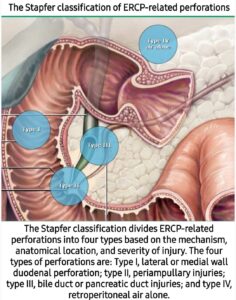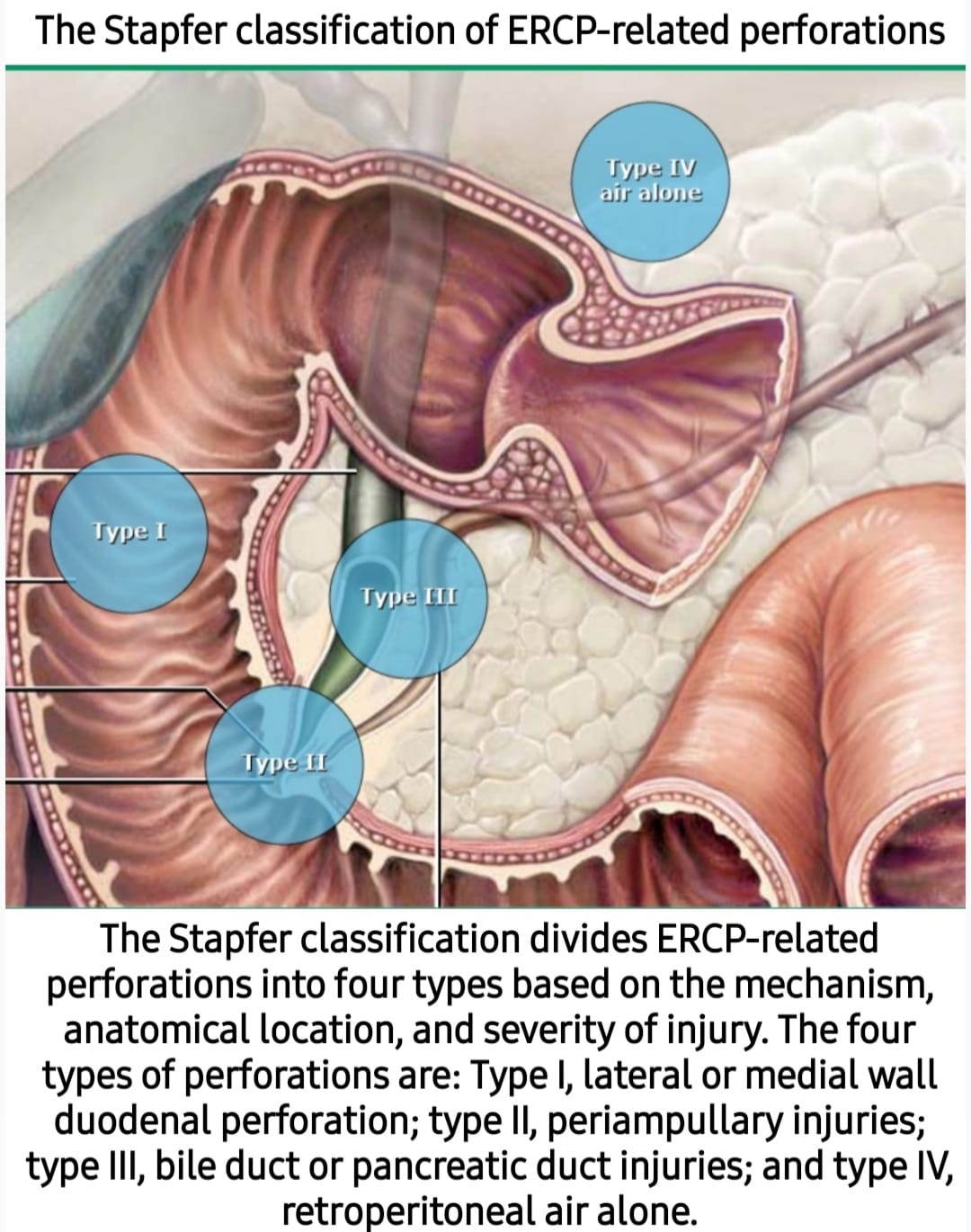Stapfer type 𝗜 are free bowel wall perforations, usually from the endoscope, and these tend to be larger and require immediate operative repair.
•Type 𝗜𝗜 are retroperitoneal duodenal perforations and are secondary to periampullary injury. These are the most commonly encountered type of perforation and require surgical intervention depending on severity.
•Type 𝗜𝗜𝗜 perforations involve the pancreatic or distal common bile duct and are usually secondary to wire, basket, or balloon instrumentation.
•Type 𝗜𝗩 perforations occur when only retroperitoneal air is seen and may not represent true perforation. Some authors suggest that in the absence of physical exam findings, retroperitoneal air can be a result of insufflation used to maintain lumenpatency during endoscopic procedures.

𝗠𝗮𝗻𝗮𝗴𝗲𝗺𝗲𝗻𝘁:
•𝗠𝗲𝗱𝗶𝗰𝗮𝗹 management can be attempted in patients with retroperitoneal perforations who are
hemodynamically stable and who exhibit no evidence of peritonitis. 𝗦𝘂𝗿𝗴𝗲𝗿𝘆 should be reserved for patients with hemodynamic instability, exam findings consistent with peritonitis, a large free perforation, and a biliary obstruction or for those who do not improve after a trial of non-operative management.
𝗥𝗲𝗳: Emergency General Surgery, springer, 2020

